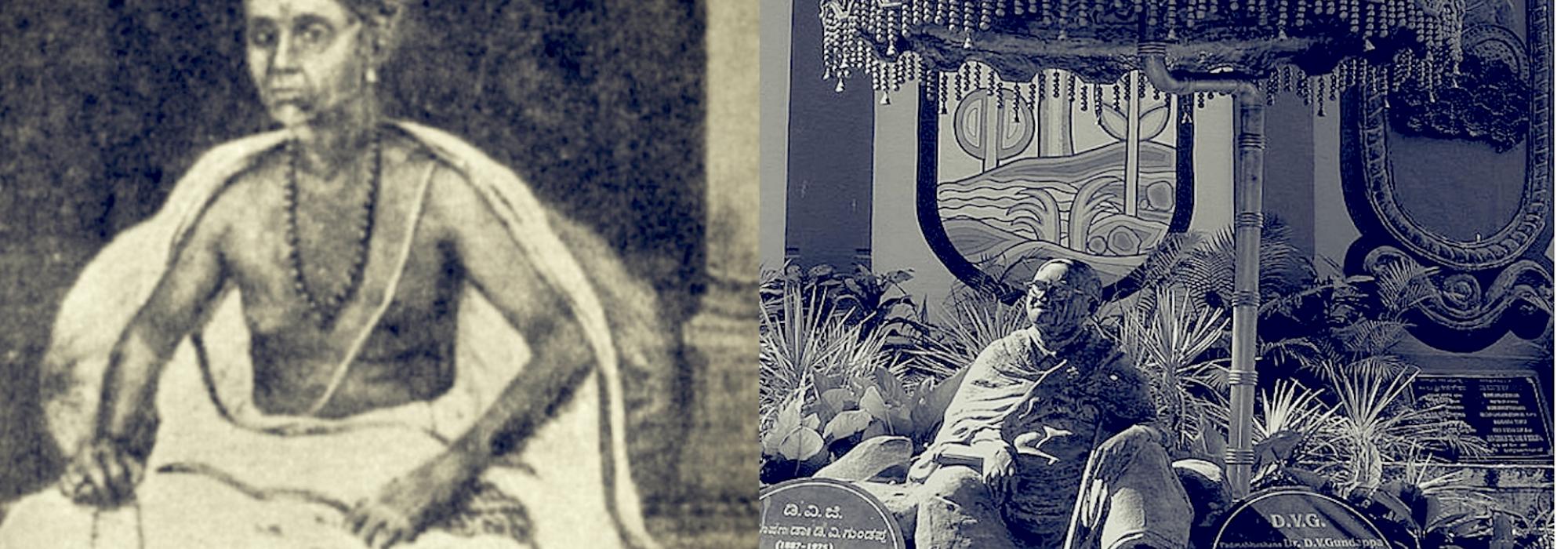When the world-renowned scholar, India-aficionado, and multifaceted expert on various art forms, Ananda Coomaraswamy was asked to deliver a message regarding India’s independence, this is the note he wrote from America: “Be yourselves. Tread on the path showed by Mahatma Gandhi, Kumarappa, D.V. Gundappa and Ramana Maharshi.”
Political Reforms in Mysore
DVG directly involved himself for several decades in the politics of Karnataka (then, Mysore State). Several Diwans regularly sought suggestions and advice from DVG. For fourteen years (1927 – 1940), DVG was active as the Member of the Legislative Council of Mysore. His guidance was available to various government committees and officials.
In 1938-39, the Mirza Government appointed a committee under the chairmanship of K.R. Srinivasa Iyengar to examine the changes to be introduced in the Constitution of the Mysore State. As a member of this Expert Committee, DVG played an extremely notable part. Owing to his farsightedness, his thorough preparation, and deep scholarly study, DVG exerted a profound influence on both the Chairman and other members. On any matter, if DVG’s opinion differed from that of the others, he ensured that the difference was made part of the record. Ultimately, when the final report was submitted to the Diwan at the end of August 1939, D.V.G submitted his elaborate tract titled, Dissenting Notes, a compilation of his disagreements along with it. even today, this volume of dissenting notes is worthy of study for students of political science.
Although a state’s administration is carried on by the Cabinet of Ministers, it must have as its foundation the support of legislators and general public. Before the introduction of any Bill, it must have the endorsement of the majority of the Vidhana Sabha in principle. In conducting the business of the Vidhana Sabha, there should be an opportunity to enlist the services of external experts – these were some of the points that DVG repeatedly emphasized.
DVG fiercely opposed the suggestion of giving separate voting rights for the Muslim and Christian communities. Such moves would erase the feeling of harmony among the people and give rise to sectarianism; even without such separate voting system, India had a long tradition of social harmony in various kingdoms – DVG put forward these arguments very effectively.
Post-Independence India
After observing twenty-five years of post-independence India with his own eyes, DVG said the following words around 1970:
“The hunt for votes, the greed for profit, the celebration of strife – this has been the great fortune bestowed on our country by the new system of politics – the extent of distance between the written word in books and the real-world experience has now become crystal clear…in those days, we couldn’t even imagine how despicable human nature would become when confronted with the bounty of power…
Sri Krishna has said in the Bhagavad Gita, “Prakrutistvaam niyokshyati.” Thus, our accomplishment is directly proportional to our innate nature [Prakruti]. We have not understood our innate nature. We have merely increased the scope for avarice present in nature. Desires and wants have grown and self-restraint has been declining…
The real freedom of people is this: providing an opportunity and facility to enable the natural flowering of the noble strengths among the citizens and an unfettered development of honest and dignified self-effort.
Retirement from Politics
DVG who had been a Member of the Legislative Council of the Mysore State as long as Mirza was the Diwan – that is, for fourteen years – desired to retire from politics after Mirza’s term ended.
From now on, I will live in peace and contentment through the pursuit of serious study or writing or some similar activity.
This was his resolve. However, scores of DVG’s friends were completely unhappy with his decision to retire. Friends like K.T. Bhashyam and others insisted, asking him to contest elections and said that they would make all arrangements like canvassing, arranging money for [election] deposits and so on. DVG had to kindly assent to get elected – this was their insistence. When this pressure escalated, DVG requested them to give him a day to think over the matter. Contemplating on what his exact duty in life was, DVG was strolling alone in Cubbon Park that afternoon. From afar (from a loudspeaker in a marriage hall), this Tyagaraja Kriti, sung by some random musician, fell on his ears:
oka māṭa oka bāṇa
oka patnīvratuḍe |
oka cittamu galavāḍe
oka nāḍunu maravakave ||One Word, one arrow
Attached to One wife |
Endowed with One Mind
You never forgot these even for One day||
The moment he heard these words of Tyagaraja, DVG’s original decision solidified. He resolved that he would not change the decision that he had originally taken no matter the cost.
However, even after he retired from politics, his conviction of spreading awareness and energy among the people never dimmed. To this end, he established the Gokhale Institute of Public Affairs and developed it.
To be continued














































